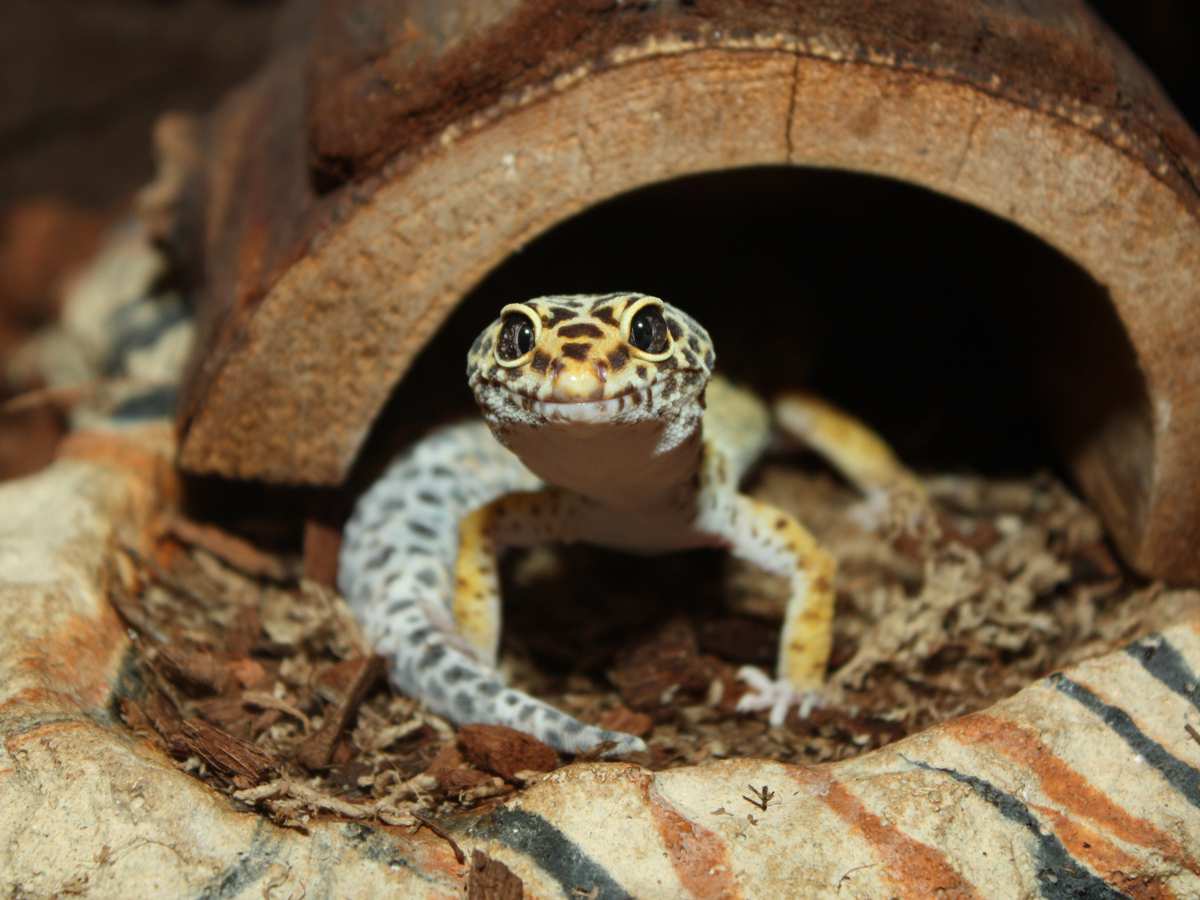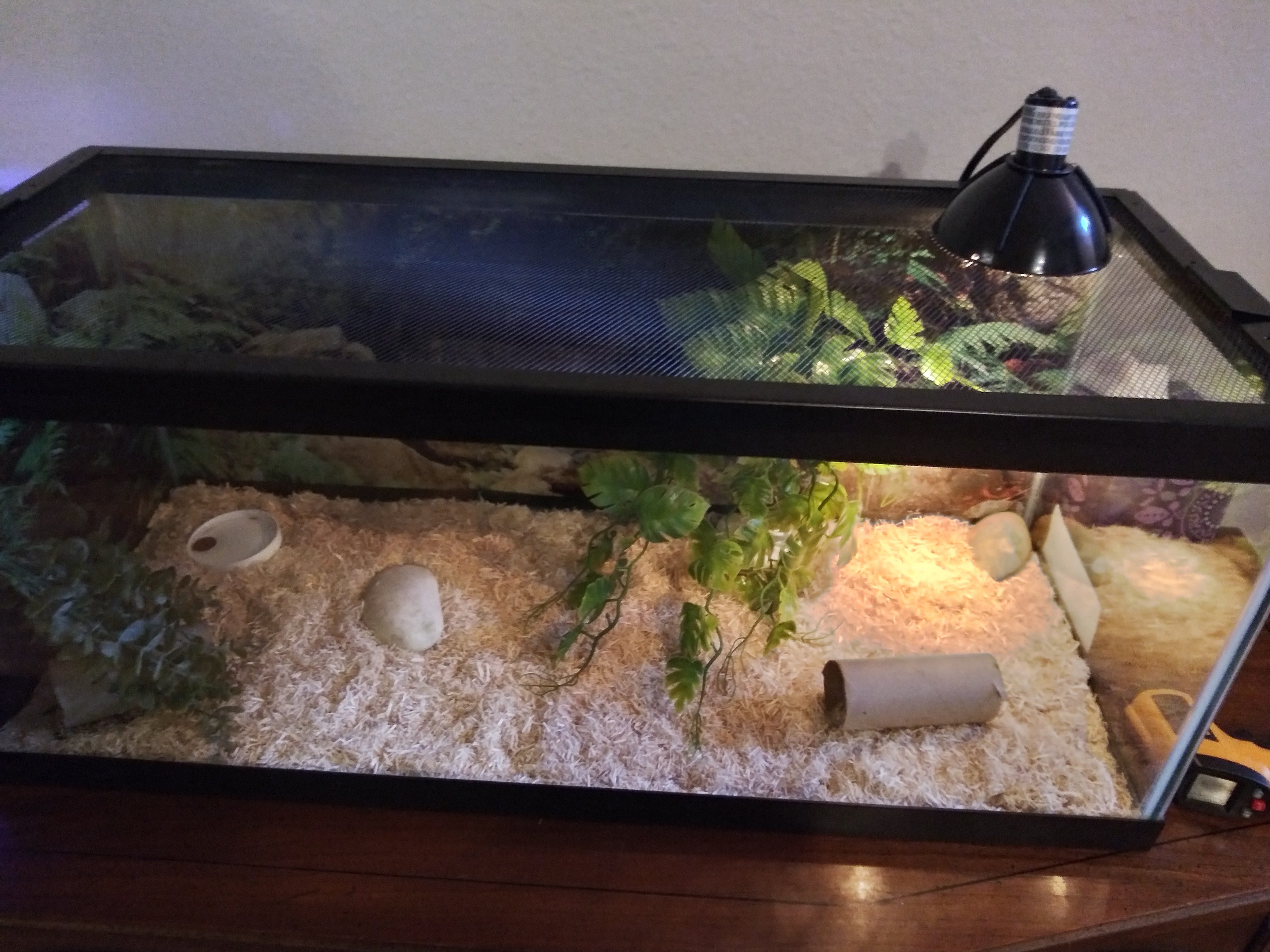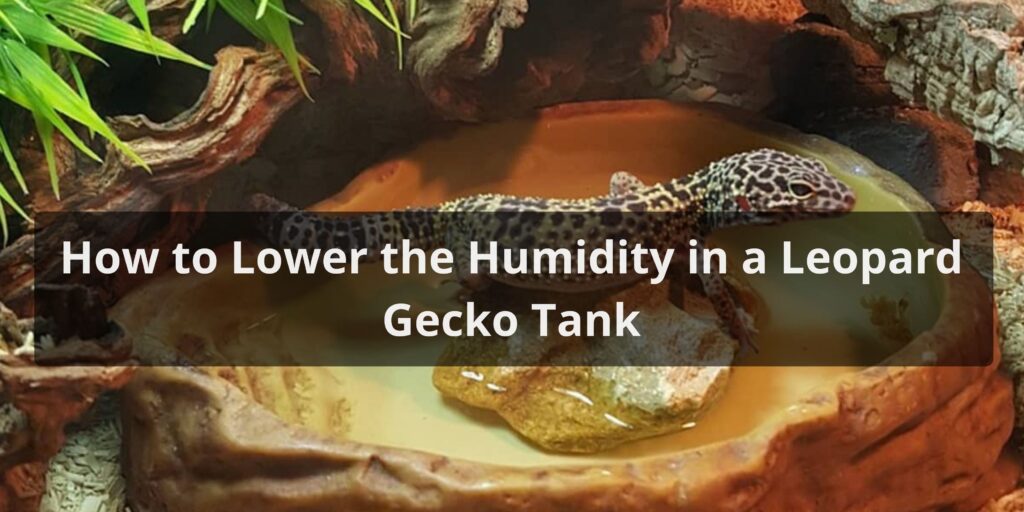Leopard geckos originate from the deserts of Asia and Pakistan. As such, they require relatively low humidity levels in captivity to thrive. Maintaining proper humidity ranges in a leopard gecko enclosure is crucial for your gecko’s health and wellbeing. Luckily, there are several effective and easy ways how to lower humidity in leopard gecko tank if it becomes too high.
Why Low Humidity is Important

Leopard geckos are susceptible to respiratory infections when kept in enclosures with excessive humidity. High humidity can also lead to potentially life-threatening conditions like scale rot. Ideal humidity levels for leopard geckos range from 30-40%. Anything consistently higher than 50% can cause problems. It is vital to closely monitor and control the humidity in your leopard gecko’s habitat.
Adjusting the Enclosure Set-Up
One of the easiest ways to lower humidity is to make some adjustments to your leopard gecko’s tank set-up. Here are some tips:
- Switch from a glass tank to a screen/mesh enclosure. Screen cages allow for much more ventilation and evaporation.
- Make sure the tank is not too large for your leopard gecko. Extra open space holds moisture.
- Add more holes or mesh panels to the enclosure if it is glass or plastic. More ventilation equals lower humidity.
- Use only a small, shallow water dish. Limit open water sources which increase moisture levels.
- Avoid dense or moist substrates like eco earth or moss. Opt for dry, loose substrates like reptile carpet or paper towels.
- Keep the cool side of the tank bare bottom. Humid substrates on both sides of the tank hold too much moisture.
- Raise the basking spot higher to increase airflow underneath.
Adjusting the Environment

Along with updates to the tank itself, adjustments to the ambient environment can also lower humidity:
- Maintain proper heating and temperature gradients. Proper heat evaporates moisture.
- Make sure the room the enclosure is in has adequate ventilation and air circulation.
- Use a hygrometer to monitor humidity levels and make adjustments as needed.
- Use a dehumidifier in the room if ambient humidity is high.
- Avoid misting the tank excessively as part of routine care.
- Ensure the vivarium light/heating source is not too close to the tank ceiling. Lights that are too close heat and evaporate less.
Using Desiccant Products
Specialized drying products offer an easy way to remove moisture from a leopard gecko’s habitat. Some options include:
- Reptile-safe desiccant packs. These absorb moisture and can be “recharged” in the oven.
- Canisters of calcium chloride or silica gel beads. They also absorb humidity.
- Dehumidifying crystals. These are designed for terrariums and reduce moisture.
Place packs or canisters in the tank, checking often and replacing as needed. Just be careful your gecko does not come into direct contact with the products.
When to Be Concerned

Persistently high humidity that does not respond to adjustments likely indicates an underlying ventilation issue. If the humidity remains above 60% for multiple days even after making changes, it is time to thoroughly evaluate the tank set-up. Make sure there is adequate and unrestricted airflow.
Continued high moisture levels pose a serious health risk, so take action immediately if your leopard gecko’s habitat does not have proper dry conditions. Seek input from a qualified reptile veterinarian as well. Act quickly at the first signs of respiratory illness.
Conclusion
Maintaining appropriate humidity levels is a key part of keeping leopard geckos healthy in captivity. If the humidity in your leopard gecko’s tank is too high, there are many straightforward fixes like increasing ventilation, adjusting the environment, and using desiccant products. Carefully monitor the humidity with a hygrometer and make changes as needed. With some simple adjustments to their habitat, you can easily provide your leopard gecko with the dry conditions they require to thrive.
FAQs About How to Lower Humidity in Leopard Gecko Tank
What is the ideal humidity range for a leopard gecko tank?
The ideal humidity range for a leopard gecko tank is 30-40%. Maintaining this level is essential to mimic their natural arid habitat. Avoiding excess humidity helps prevent respiratory issues, skin problems, and other health concerns for your gecko.
Why is it important to maintain proper humidity levels?
Maintaining proper humidity levels is vital because leopard geckos are adapted to arid environments. High humidity can lead to respiratory infections and skin problems. By providing the right humidity, you ensure your gecko’s health, comfort, and overall well-being.
How can I lower humidity in the gecko’s tank effectively?
To lower humidity effectively, increase ventilation by adding more vents or using a mesh lid. Reduce misting and use a dry substrate like paper towels or reptile carpet. Ensure the water dish is shallow and placed on the cool side. These steps help create a drier environment for your gecko.
Are there specific substrates or bedding to reduce humidity?
Yes, substrates like paper towels, reptile carpet, or slate tiles are excellent choices to reduce humidity. These materials don’t retain moisture like coconut coir or cypress mulch. Using a substrate that promotes dryness helps maintain the desired humidity range.
Can changing the tank’s ventilation help lower humidity?
Yes, improving ventilation in the tank can effectively lower humidity levels. Adding more vents or using a mesh lid increases air circulation and helps prevent excess moisture buildup. Proper ventilation is a key factor in controlling humidity and ensuring your gecko’s well-being.




